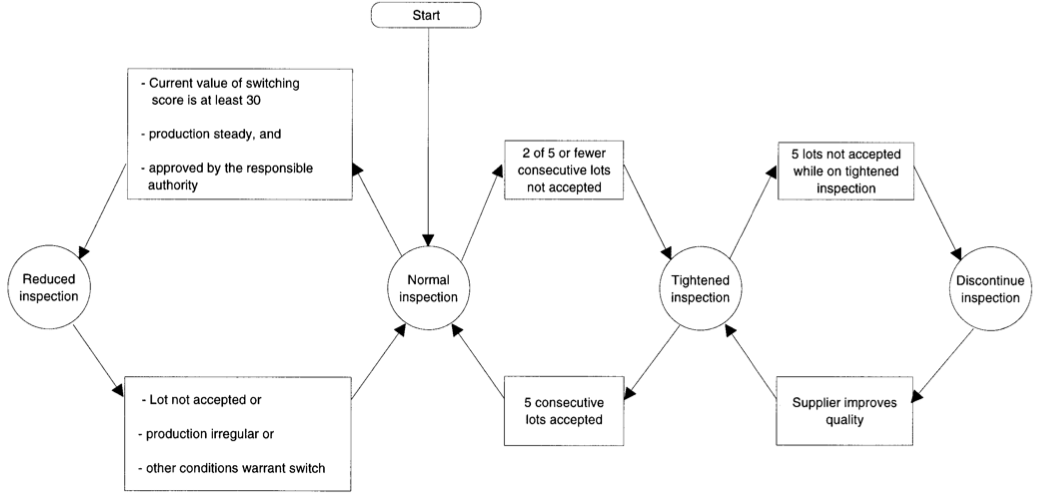 Over the last month, I received several messages from readers on this topic. So I tried to think of a few ways to reduce the frequency of QC inspections without taking high risks.
Over the last month, I received several messages from readers on this topic. So I tried to think of a few ways to reduce the frequency of QC inspections without taking high risks.
1. Two methods I approve of
The two most common solutions are:
- Reducing the inspection severity (i.e. checking a smaller number of samples by choosing the “reduced” severity);
- Skipping some lots randomly, and letting the supplier self-inspect their quality most of the time.
But then, how to select which orders can receive a “lighter dose” of quality control? In the words of one of the importers who wrote to me:
We write PO’s to many factories and my gut tells me which factories are good factories with regard to quality but it is difficult to quantify. What would be your suggestion to quantify this?
The ISO 2859-1 standard actually gives a method to switching from normal severity to reduced severity, when a factory get to a certain score. I reproduced a summary of the switching rules below.
If you want to follow this rigorous process, you should work hand in hand with a quality control firm — unless you are already familiar with this standard.
I don’t know of any rigorous method for determining which manufacturers deserve a “skip lot” procedure, though.
As a rule of thumb, if two inspections in a row on reorders of the same product are fine and you trust the factory owner, you can switch to controlling only 50% of their shipments. Make sure the skipped lots are announced at the last moment, and in a randomized manner.
[UPDATE: please don’t miss the first comment below this article, which offers some great ideas on this topic.]
2. Some other methods you should avoid
As I wrote in How to reduce your QC inspections budget?, I have seen buyers take decisions without much thought, with disastrous results:
Bad ideas to reduce your quality control expenses:
- Skip inspections on all orders below 20,000 USD (for example)
- Pay only for 1 day of inspection, even when the professionals advise to spend several man-days
- Look for a cheaper provider of QC inspections (in China there is always a lower price, but the service is usually quite different)
Do you agree?


I agree that several inspections with 100% success are a pre-requisite.
I also look for:
1) Correlation between the supplier’s measurements, the 3rd party inspector’s measurements, and my own incoming inspection. (That is, not only pass – fail, but confirmation that variable measurements – say, average lengths and diameters– are consistent. )
2) Verification of shop floor process control, and process capability. This can only be done by a good look at the process, and SPC analysis of the process results over time. (If the process isn’t highly capable, I work with the supplier to make it so, or find a new supplier!)
Best……..Brad
Brad,
Excellent suggestions! I agree 100%.